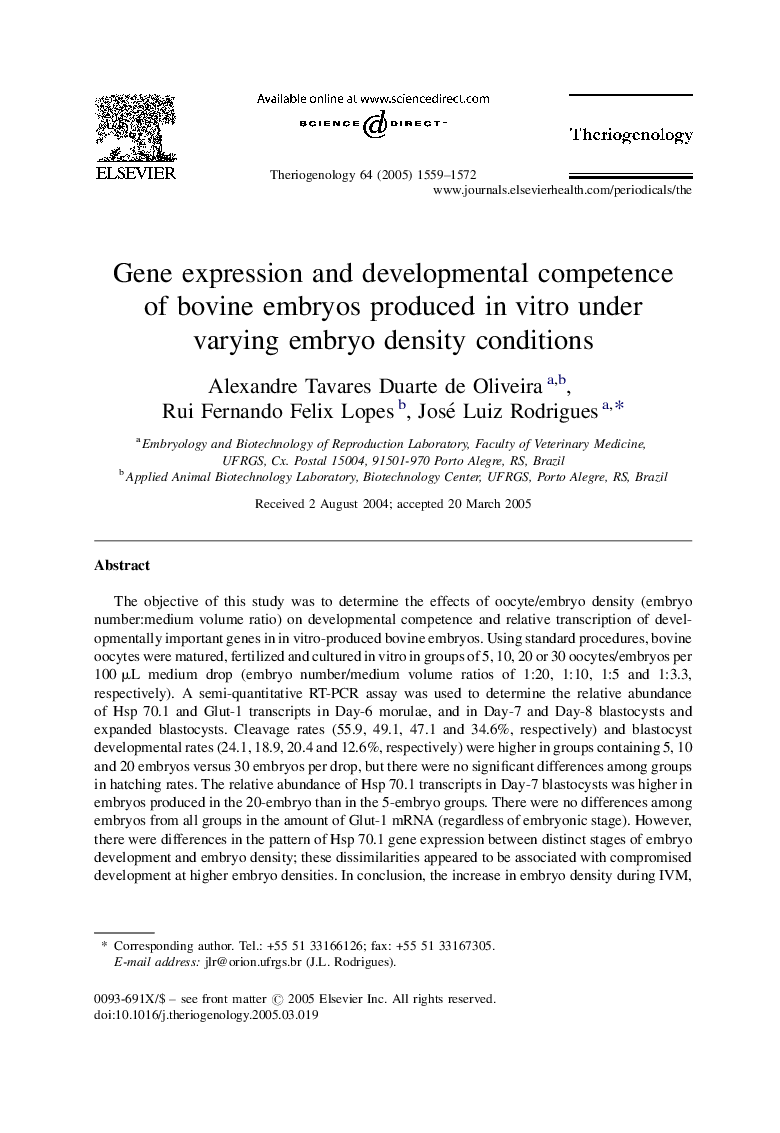| Article ID | Journal | Published Year | Pages | File Type |
|---|---|---|---|---|
| 10893885 | Theriogenology | 2005 | 14 Pages |
Abstract
The objective of this study was to determine the effects of oocyte/embryo density (embryo number:medium volume ratio) on developmental competence and relative transcription of developmentally important genes in in vitro-produced bovine embryos. Using standard procedures, bovine oocytes were matured, fertilized and cultured in vitro in groups of 5, 10, 20 or 30 oocytes/embryos per 100 μL medium drop (embryo number/medium volume ratios of 1:20, 1:10, 1:5 and 1:3.3, respectively). A semi-quantitative RT-PCR assay was used to determine the relative abundance of Hsp 70.1 and Glut-1 transcripts in Day-6 morulae, and in Day-7 and Day-8 blastocysts and expanded blastocysts. Cleavage rates (55.9, 49.1, 47.1 and 34.6%, respectively) and blastocyst developmental rates (24.1, 18.9, 20.4 and 12.6%, respectively) were higher in groups containing 5, 10 and 20 embryos versus 30 embryos per drop, but there were no significant differences among groups in hatching rates. The relative abundance of Hsp 70.1 transcripts in Day-7 blastocysts was higher in embryos produced in the 20-embryo than in the 5-embryo groups. There were no differences among embryos from all groups in the amount of Glut-1 mRNA (regardless of embryonic stage). However, there were differences in the pattern of Hsp 70.1 gene expression between distinct stages of embryo development and embryo density; these dissimilarities appeared to be associated with compromised development at higher embryo densities. In conclusion, the increase in embryo density during IVM, IVF, and IVC phases of in vitro embryo production might negatively affect embryo development and the pattern of gene expression of in vitro-produced bovine embryos.
Related Topics
Life Sciences
Agricultural and Biological Sciences
Animal Science and Zoology
Authors
Alexandre Tavares Duarte de Oliveira, Rui Fernando Felix Lopes, José Luiz Rodrigues,
